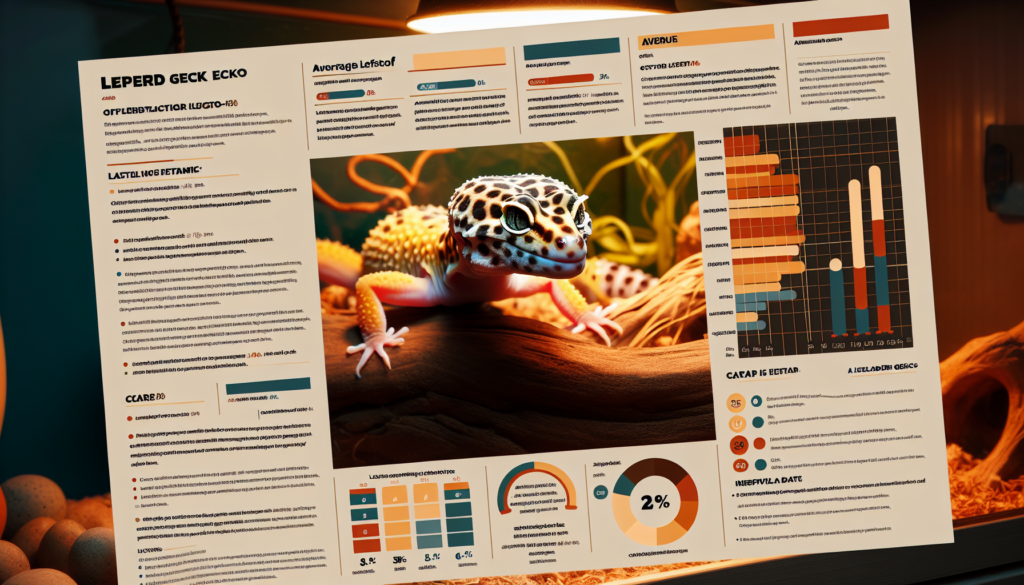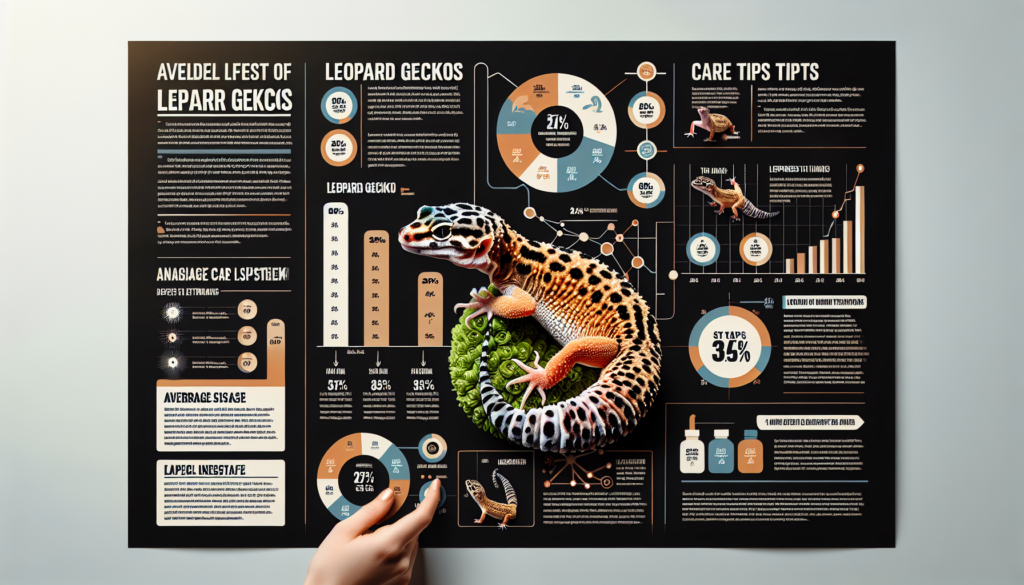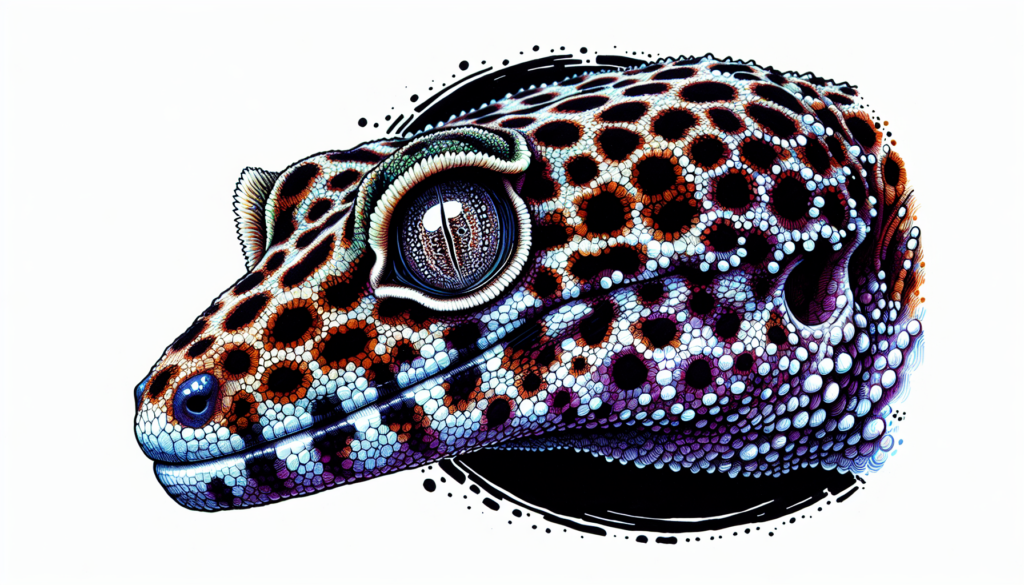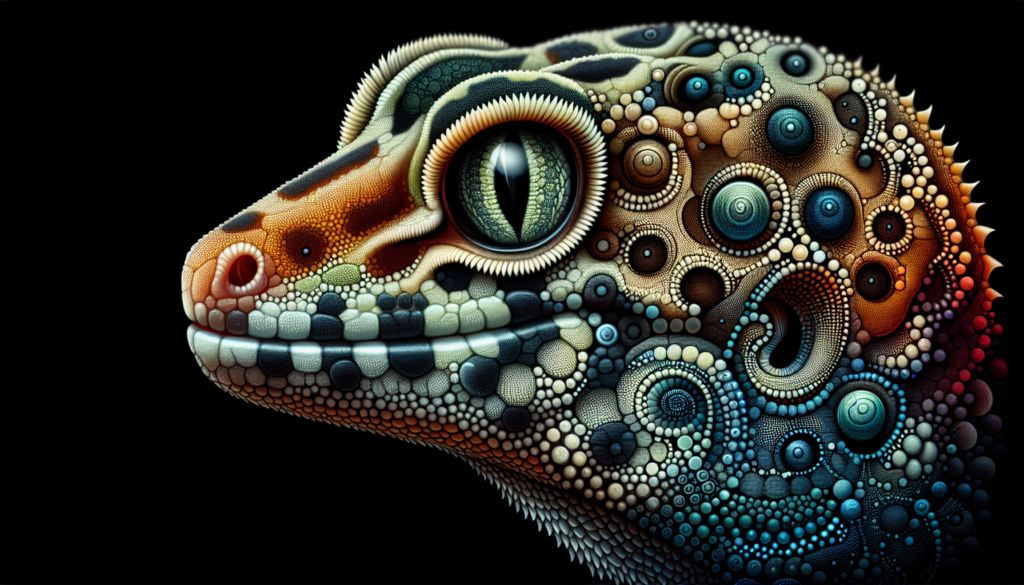If you’ve ever wondered how long a leopard gecko can live, you’re in for a treat. In this article, we’ll be exploring the fascinating world of leopard geckos and uncovering the secrets behind their lifespan. From understanding the factors that can affect their longevity to discovering tips on how to ensure their well-being, get ready to embark on a journey of discovery into the world of these incredible reptiles. So grab your favorite snack and join us as we unravel the mysteries of the leopard gecko lifespan.
Leopard Gecko Lifespan

Understanding the Lifespan of Leopard Geckos
Leopard geckos are fascinating reptiles that make popular pets due to their unique appearance and relatively low maintenance requirements. It is essential for every leopard gecko owner to have a good understanding of their lifespan, as it plays a crucial role in their care and responsibility. By understanding the factors that influence their lifespan, providing proper care and attention, and knowing how to identify common health issues, you can help ensure that your leopard gecko lives a long and healthy life.
Factors Affecting Leopard Gecko Lifespan
Several factors can influence the lifespan of a leopard gecko. These include genetics and breeding, sex and reproductive activity, environmental factors, and predation and protection. Understanding these factors can help you in providing the best possible care and ensuring a longer lifespan for your leopard gecko.
Genetics and Breeding: The genetics of a leopard gecko are an essential factor in their lifespan. Health issues and genetic predispositions to certain diseases can be passed down from one generation to another. Reputable breeders who prioritize the health and well-being of their geckos can ensure healthier offspring with a longer lifespan.
Sex and Reproductive Activity: The lifespan of a leopard gecko can also be influenced by their sex and reproductive activity. Females tend to have a slightly shorter lifespan compared to males due to the physical stress of egg-laying. Breeding females, in particular, may experience additional health concerns and shorter lifespans due to the strain on their bodies.
Environmental Factors: The environment in which a leopard gecko is kept plays a significant role in their overall health and lifespan. Factors such as temperature, humidity, lighting, and overall habitat conditions can impact their well-being. By providing the optimal environment, you can help ensure a longer, healthier life for your gecko.
Predation and Protection: In the wild, leopard geckos face predators and other threats to their survival. By keeping them as pets, you provide them with protection from these dangers, increasing their chances of living a longer life. However, it is still crucial to ensure their safety within their enclosure and minimize any potential hazards.
Providing Proper Care and Environment
One of the key factors in promoting a long leopard gecko lifespan is providing them with proper care and a suitable environment. Here are some essential considerations to help you create an ideal habitat for your gecko.
Creating an Ideal Habitat: Leopard geckos require an enclosure that closely mimics their natural habitat, with a balance of heat, light, and hiding spots. This includes a combination of warm and cool areas within their enclosure to allow for thermoregulation.
Choosing the Right Enclosure: When selecting an enclosure for your leopard gecko, it is important to choose one that provides adequate space for them to move around comfortably. A 20-gallon tank is typically recommended for one adult leopard gecko.
Substrate and Decorations: The substrate you choose for the enclosure should be safe and easily maintainable. Avoid using loose substrates that may be ingested by your gecko and cause impaction. Decorations such as rocks, branches, and hides should be provided to offer hiding spots and stimulation.
Lighting and UVB Requirements: Leopard geckos are crepuscular and do not require UVB lighting as intensively as other reptiles. However, providing a low-level UVB light source can still benefit their overall health by aiding in the synthesis of vitamin D3 and calcium absorption.
Temperature Gradient and Heat Sources: Leopard geckos require a temperature gradient within their enclosure, ranging from 85-90°F (29-32°C) on the warm side to 75-80°F (24-27°C) on the cool side. Heat sources such as heat mats or ceramic heat emitters should be used to provide the necessary warmth.
Humidity and Moisture Levels: Leopard geckos originate from arid regions and prefer low humidity levels. Aim for a humidity level of around 30-40% in their enclosure to prevent issues such as respiratory infections.
Space and Hideouts: Leopard geckos are solitary animals and appreciate having their own space. Multiple hides should be provided throughout the enclosure, allowing them to choose their preferred hiding spot and feel secure.
Maintaining a Clean Environment: Regular cleaning and maintenance of the enclosure is vital to promote good hygiene and prevent the buildup of bacteria. Spot cleaning should be done daily, and a deep clean should be performed monthly to maintain a healthy environment for your leopard gecko.
Ensuring a Balanced Diet
A well-balanced diet is crucial for the overall health and longevity of your leopard gecko. Providing proper nutrition and supplementation can help prevent malnutrition, obesity, and other dietary-related health issues.
Understanding Leopard Gecko Dietary Needs: Leopard geckos are insectivores and primarily eat a diet consisting of live insects. The staple insects for their diet include crickets, mealworms, and dubia roaches. It is important to feed them appropriately sized prey items to avoid choking or digestive issues.
Feeding Frequency and Portion Size: Adult leopard geckos should be fed every 2-3 days, while juveniles require more frequent feedings. The portion size should be appropriate for their size and age to prevent overfeeding and obesity.
Variety and Nutritional Supplements: Offering a variety of insect prey helps ensure a balanced diet. Gut-loading your feeder insects with nutritious foods or providing supplements like calcium and multivitamins can also help meet your gecko’s nutritional needs.
Avoiding Toxic and Harmful Foods: Some foods can be toxic to leopard geckos and should be avoided. These include wild-caught insects, toxic plants, and foods high in fat or containing excessive phosphorus. Researching safe food options for your gecko is crucial.
Hydration and Water Requirements: While leopard geckos obtain most of their required moisture from their food, it is still important to provide a shallow dish of fresh water at all times. This allows them to drink if necessary and aids in maintaining proper hydration.

Maintaining Suitable Temperature and Humidity
Maintaining the appropriate temperature and humidity levels is crucial for the health and well-being of your leopard gecko. Incorrect temperature or humidity can lead to various health issues and shorten their lifespan.
Temperature Requirements for a Healthy Gecko: Leopard geckos require a thermal gradient within their enclosure, allowing them to choose their desired temperature. Provide a warm basking spot between 85-90°F (29-32°C) and a cooler side around 75-80°F (24-27°C).
Proper Heating and Cooling Methods: Heat sources such as heat mats, ceramic heat emitters, or heat bulbs can be used to create the required temperature gradient. It is essential to use thermostats or temperature controllers to regulate and maintain the appropriate temperature.
Monitoring and Adjusting Temperature: Regularly monitor the temperature within the enclosure using reliable thermometers. Adjust the positioning or wattage of heat sources if necessary to ensure the optimal temperature range.
Humidity Levels for Leopard Geckos: Leopard geckos are native to arid regions and require relatively low humidity levels. Aim for a humidity range of 30-40% in their enclosure to prevent respiratory issues. Excessive humidity can lead to respiratory infections or skin problems.
Humidity Control Tips: Proper ventilation can help control humidity levels within the enclosure. Avoid using substrates that retain moisture, and utilize hygrometers to monitor humidity accurately. If needed, you can also use dehumidifiers or humidifiers to adjust the humidity levels.
Preventing Overhandling and Stress
Leopard geckos are generally docile and enjoy minimal handling. Overhandling or subjecting them to stressful situations can have a negative impact on their health and lifespans. It is crucial to understand their behavior and limit handling to essential situations only.
Leopard Gecko Behavior and Handling: Leopard geckos are nocturnal and tend to be more active during the evening and night. They are solitary animals and can feel stressed when constantly exposed to handling or excessive human interaction. Observing their body language and respecting their boundaries is important.
Importance of Limiting Stress: Leopard geckos are susceptible to stress, which can weaken their immune system and make them more prone to health issues. High-stress levels can lead to decreased appetite, weight loss, and even illness. Maintaining a calm and stress-free environment is essential for their well-being.
Minimizing Handling to Essential Situations: Limit handling to necessary situations such as health checks, enclosure maintenance, or relocating them to a different enclosure. Avoid unnecessary handling, especially during times of shedding or when they show signs of stress.
Techniques for Proper and Safe Handling: When handling your leopard gecko, it is important to use proper techniques to ensure their safety and minimize stress. This includes using gentle and slow movements, supporting their body properly, and avoiding sudden loud noises or disturbances.

Promoting Hygiene and Preventing Infections
Maintaining good hygiene practices is crucial for preventing infections and promoting the overall health of your leopard gecko. Proper cleaning and disinfection protocols, as well as vigilant monitoring of signs of illness, can contribute to a longer lifespan.
Cleaning and Disinfection Protocols: Regularly clean and disinfect the enclosure and all accessories to prevent the buildup of bacteria, parasites, and potential infections. Use reptile-safe disinfectants and follow the manufacturer’s instructions.
Detecting Signs of Illness and Infection: Regularly monitor your leopard gecko for any signs of illness or infection. These can include changes in appetite, weight loss, lethargy, abnormal feces, discharge from the eyes or nose, and unusual skin conditions. Promptly seek veterinary assistance if any concerns arise.
Quarantine Procedures for New Geckos: When introducing a new leopard gecko to an existing collection, it is crucial to quarantine them for a period of time to prevent the spread of any potential diseases. Quarantine procedures help protect the health of both the new gecko and any existing geckos.
Maintaining Good Hygiene Practices: Besides keeping the enclosure clean, it is important to practice good personal hygiene when handling your leopard gecko. Thoroughly wash your hands before and after handling, and avoid cross-contamination between different enclosures or reptile species.
Identifying Common Health Issues
Even with the best care, leopard geckos can still experience health issues. Being aware of common diseases and ailments and knowing the symptoms and warning signs can help you take prompt action and seek appropriate treatment for your gecko.
Common Diseases and Ailments: Some of the common health issues that leopard geckos may experience include respiratory infections, parasitic infestations, metabolic bone disease, shedding issues, and mouth infections. Regular veterinary check-ups and maintaining optimal care can help prevent or catch these issues early.
Symptoms and Warning Signs: Symptoms of illness can vary depending on the specific health issue. However, some common signs include loss of appetite, weight loss, lethargy, abnormal bowel movements, abnormal shedding, discharge from the eyes or nose, and changes in behavior. Promptly consult with a veterinarian if any of these symptoms occur.
First Aid and Basic Treatment: In case of minor injuries or health issues, you can provide basic first aid at home. This may include soaking your gecko in a shallow, warm water bath, offering easily digestible food, providing a clean and stress-free environment, or using over-the-counter reptile-safe topical treatments as directed by a veterinarian.
Seeking Veterinary Assistance: If your leopard gecko displays severe symptoms, is injured, or shows no improvement after basic first aid, it is crucial to consult with a reptile veterinarian. These professionals have specialized knowledge and experience in diagnosing and treating reptile-specific health issues.

Tips for Increasing Leopard Gecko Lifespan
Promoting a long and healthy life for your leopard gecko involves adopting proactive practices and providing them with the best care possible. Here are some additional tips that can help increase their lifespan:
Regular Health Check-ups: Schedule regular veterinary check-ups for your leopard gecko, even if they appear healthy. These check-ups can help catch any underlying health issues early and allow for prompt treatment.
Proactive Monitoring and Observations: Observe your leopard gecko daily for any changes in behavior, appetite, weight, or physical appearance. Being proactive in monitoring their health allows for early detection of any potential issues.
Proper Nutrition and Supplementation: Ensure that your gecko is receiving a well-balanced and nutritious diet. Follow proper feeding practices and provide necessary supplementation to meet their unique dietary requirements.
Implementing a Stress-Free Routine: Establish a routine that minimizes stress for your leopard gecko. This includes maintaining a consistent day-night cycle, avoiding unnecessary disturbances, and providing a regular feeding schedule.
Handling with Care and Caution: When handling your leopard gecko, always be gentle and cautious. Avoid excessive handling and respect their personal space to minimize stress and potential injuries.
Providing Mental and Physical Stimulation: Offering a variety of hiding spots, climbing structures, and environmental enrichment can help keep your leopard gecko mentally and physically stimulated. This contributes to their overall well-being and can promote a longer lifespan.
Conclusion
Understanding the lifespan of leopard geckos and the factors that influence it is essential for every owner. By providing proper care and attention, maintaining a suitable environment, ensuring a balanced diet, and taking necessary precautions to prevent stress and infections, you can contribute to a longer and happier life for your leopard gecko. Regular monitoring, prompt veterinary care, and implementing proactive measures can help increase their lifespan, ensuring that you and your gecko enjoy many wonderful years together.
